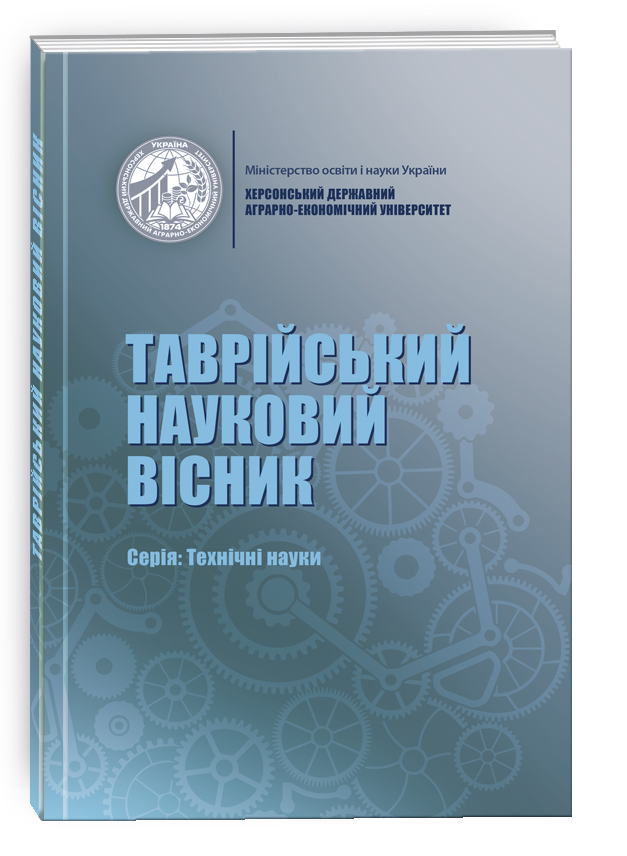ENHANCING EFFICIENCY IN WIRELESS POWER TRANSFER SYSTEMS USING RESONANT INDUCTIVE COUPLING AND DYNAMIC WIRELESS CHARGING
DOI:
https://doi.org/10.32782/tnv-tech.2025.1.59Keywords:
dynamic wireless charging, mutual inductance, coil geometry, UGV charging, electromagnetic interference, resonant inductive couplingAbstract
This article presents a combined approach to enhancing the efficiency of wireless power transfer (WPT) systems, integrating resonant inductive coupling with dynamic wireless charging and optimized energy management. The research focuses on improving energy transmission by maximizing mutual inductance and quality factors of resonant coils in near-field operation. To achieve this, advanced compensation networks and control algorithms were developed, enabling precise resonance tuning and dynamic system stability. The study introduces a mathematical model describing the system’s dynamic state through a resonance energy transfer equation, accounting for resistive losses, reactive coupling, and system nonlinearities, providing a framework for analyzing coil interactions and optimizing inductive coupling parameters.The mutual inductance between coils was further modeled using geometrical and material parameters, and the energy transfer was expressed as a function of angular frequency and transmitter current. An experimental setup was designed to validate the theoretical framework, focusing on dynamic charging for unmanned ground vehicles (UGVs). The prototype system included an array of transmitter coils integrated into a test platform and a receiver coil mounted on a UGV. Multiple scenarios were tested, including various vehicle speeds (0.5–2.0 m/s) and positional misalignments, to simulate real-world operating conditions. Efficiency measurements were conducted using a power analyzer, revealing the relationship between coupling coefficients, quality factors, and energy transfer efficiency. The results demonstrated that high-quality factors and optimal coupling coefficients significantly enhance energy transfer efficiency while mitigating losses. The system was capable of maintaining stable performance despite small positional deviations, highlighting its robustness. Additionally, the influence of coil geometry, spatial distribution, and material properties on magnetic field strength and uniformity was investigated, emphasizing the importance of coil design. The study concludes that the proposed approach effectively addresses the challenges of WPT systems, particularly in dynamic scenarios. However, practical considerations such as thermal management and electromagnetic interference remain critical for real-world implementations, necessitating further research to ensure reliable and scalable solutions.
References
Dunlap C., Van Neste C. W. Magnetic gear wireless power transfer system: Prototype and electric vehicle charging. Energies. 2025. Vol. 18. P. 532. DOI: https:// doi.org/10.3390/en18020532.
Lee B., Kim J., Jo H., Min H., Bien F. Arrangement free wireless power transfer via strongly coupled electrical resonances. Advanced Science. 2024. Vol. 12. DOI:10.1002/ advs.202407827.
Sawayama N. Maximum power transfer theorem with arbitrary efficiency for wireless power transfer. Physica Scripta. 2024. Vol. 100. DOI:10.1088/1402-4896/ ad96fa.
Lin C., Sun Y., Yang W. Brief introduction to wireless power transfer. Wireless rechargeable sensor networks for Internet of Things. Wireless networks. Singapore : Springer, 2025. DOI: https://doi.org/10.1007/978-981-97-9543-7_2.
Erel M., Imtiaz T., Elsanabary A., Mubin M., Tey K. S., Mekhilef S. Enabling quadruple-D compensation coil integration for efficient power transfer to receiver in wireless power transfer systems for EV charging. IEEE Journal of Emerging and Selected Topics in Power Electronics. 2025. DOI:10.1109/JESTPE.2025.3525594.
Krishnamoorthy K., Sangeetha M. Wireless power transfer. Semiconductor Optoelectronics. 2023. Vol. 42. No. 1. P. 1296–1306.
Stepins D., Zaķis J. Bezvadu elektroenerģijas pārvade (Wireless power transfer). Riga : RTU Press, 2024. 68 p. DOI: https://doi.org/10.7250/9789934370359. ISBN 978-9934-37-035-9.
Li Y., Wang H., Zhai Y., Zhu L., Yuan B., Li X. High degree of freedom limited omnidirectional wireless power transfer and reconfigurable method. IEEE Journal of Emerging and Selected Topics in Power Electronics, 2025. P. 1–1. DOI:10.1109/ JESTPE.2025.3525733.
Hao X., Yin K., Cai S., Zou J., Wang R., Ma X., Tse C., Dong T. Dispersive gains enhance wireless power transfer with asymmetric resonance. ArXiv : website. 2024. DOI:10.48550/arXiv.2408.06913.
Yang Q., Zhang H., Li C., Liu R., Wang B. Illumination design for joint imaging and wireless power transfer systems. ArXiv : website. 2024. DOI:10.48550/ arXiv.2408.00368.
Bilgiç E., Bilgiç H., Kantaroglu E. Wireless power transfer systems and wireless charging design between electric vehicles. Journal of Computer & Electrical and Electronics Engineering Sciences. 2024. Vol. 2. P. 56–61. DOI:10.51271/JCEEES-0019.
Jakubiak K., Liang J., Cipcigan L., Li C., Wu J. Simplified modelling techniques for dynamic wireless power transfer. Preprints : website. 2024. DOI:10.20944/ preprints202409.1231.v1.
Amiri M., Javadi S., Zarini H., Mili M., An J., Sookhak M., Krikidis I. Stacked intelligent metasurface for simultaneous wireless information and power transfer. ResearchGate : website. 2024. DOI:10.13140/RG.2.2.26138.04804.
Mohamed A. A., Shaier A. A., Metwally H., Selem S. I. Wireless charging technologies for electric vehicles: Inductive, capacitive, and magnetic gear. IET Power Electron. 2024. Vol. 17. P. 3139–3165.
Tian Y., Guan W., Li G., Mehran K., Tian J., Xiang L. A review on foreign object detection for magnetic coupling-based electric vehicle wireless charging. Green Energy Intell. Transp. 2022. Vol. 1.







